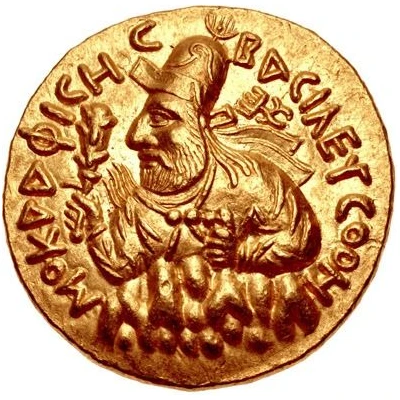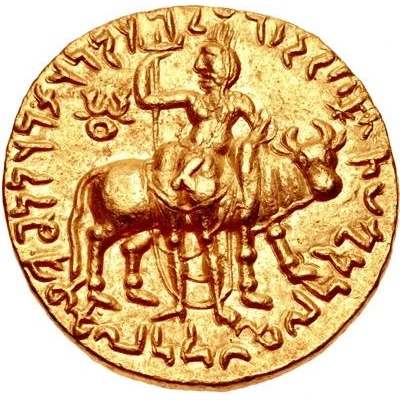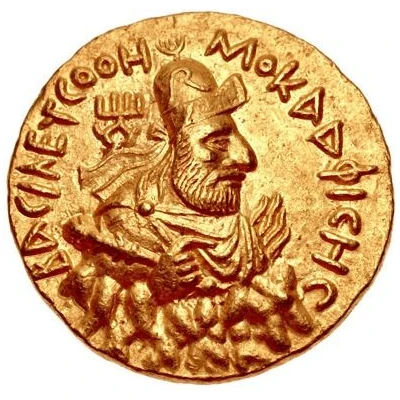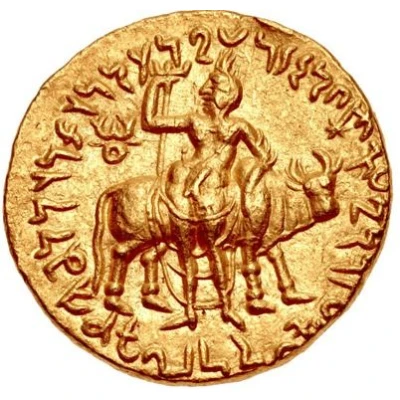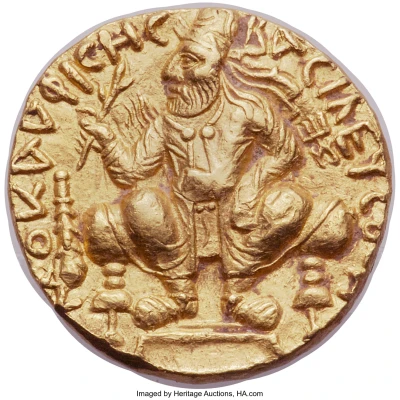
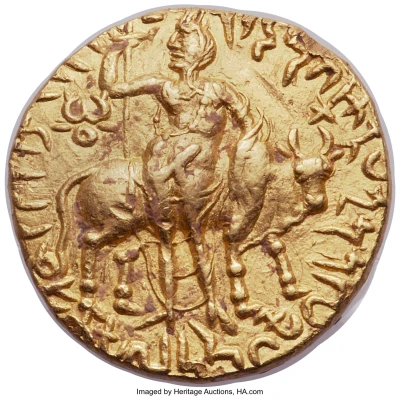

2 Dinar - Vima Kadphises
| Gold | 15.95 g | 24 mm |
| Issuer | Kushan Empire (India (ancient)) |
|---|---|
| Emperor | Vima Kadphises (Οοημο Καδφισης) (110-127) |
| Years | 113-127 |
| Value | 2 Dinars (40) |
| Currency | Drachm |
| Composition | Gold |
| Weight | 15.95 g |
| Diameter | 24 mm |
| Shape | Round (irregular) |
| Technique | Hammered |
| Demonetized | Yes |
| Updated | 2024-10-10 |
| Numista | N#129632 |
|---|---|
| Rarity index | 100% |
Reverse
Siva standing facing, head left, holding trident in right hand and resting left arm on bull Nandi behind, standing right with head facing; Buddhist triratana symbol left.
Comment
Main Bactrian mint.
Bopearachchi, Premiers, Série IX, 22. MK 11. Donum Burns 76.
The Kushans originated as a branch of the Yuezhi nomads of western China, intermixed with Bactrian, Iranian, and Indian elements, creating an eclectic blend of cultures and ethnicities. At its peak, the Kushan Empire stretched from modern Afghanistan, to northern and central Pakistan and India, and even to parts of Western China. Like many Kushan rulers, Vima Kadphises is something of a mystery in terms of his character and accomplishments. We know the broad outlines: He was the third ruler of the dynasty, succeeding his father Vima Taktu; he greatly enlarged the kingdom through conquests in modern Pakistan; the economy flourished during his reign as the Kushan Empire grew rich on foreign trade. Most importantly to our purposes, he was the first Kushan ruler to strike gold coins, including our impressive double-dinar, the types of which illustrate the unique fusion of Hellenistic Greek, Central Asian steppe, and Indian Hindu and Buddhist cultures found on early Kushan coinage. The obverse portrays Vima Kadphises as a godlike ruler seated on an elaborate cushioned throne, wearing traditional steppe headgear and garb as well as the diadem of a Greek king. Like the Huns, the Kushans seem to have artificially elongated the skulls of their male rulers from infancy, producing the effect seen here. The reverse portrays the Hindu god Shiva with the sacred bull Nandi, as well as the Buddhist triaratna ("three jewels") symbol. There is also a Roman element involved here if we consider that the gold from which this coin was made likely came from melted down aurei used to pay for eastern luxuries.
